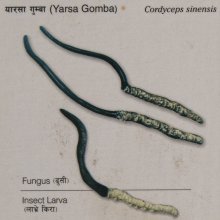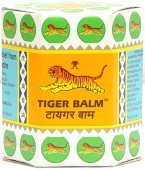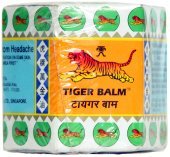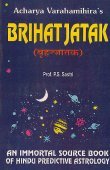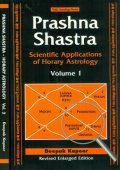Insect: 3 definitions
Introduction:
Insect means something in Hinduism, Sanskrit, the history of ancient India. If you want to know the exact meaning, history, etymology or English translation of this term then check out the descriptions on this page. Add your comment or reference to a book if you want to contribute to this summary article.
Images (photo gallery)
In Hinduism
Yoga (school of philosophy)
Source: ORA: Amanaska (king of all yogas): A Critical Edition and Annotated Translation by Jason BirchInsects are denoted by the Sanskrit term Kīṭa, according to the Parākhyatantra.—The Amanaska’s description of the ideal place in which to practise Yoga is based on four standard characteristics; it should be isolated, solitary, clean and beautiful. Similar descriptions are found in Tantric traditions. [...] The Parākhyatantra, emphasizes seclusion: “In a lonely place, or a grove, or in an agreeable mountain cave, or in an earthen hut (bhūgṛha) that is thoroughly secluded, free from insects (kīṭa), draught and damp [kīṭavātodakojjhite]”.

Yoga is originally considered a branch of Hindu philosophy (astika), but both ancient and modern Yoga combine the physical, mental and spiritual. Yoga teaches various physical techniques also known as āsanas (postures), used for various purposes (eg., meditation, contemplation, relaxation).
Ayurveda (science of life)
Toxicology (Study and Treatment of poison)
Source: Shodhganga: Kasyapa Samhita—Text on Visha ChikitsaThe study of Insects (habitat, infections and treatment) is dealt with in the Kāśyapa Saṃhitā: an ancient Sanskrit text from the Pāñcarātra tradition dealing with both Tantra and Viṣacikitsā—an important topic from Āyurveda which deals with the study of Toxicology (Viṣavidyā or Sarpavidyā).—The twelfth adhyāya of the Kāśyapasaṃhitā consisting sixty-six verses dwells upon twenty kinds of venom and the treatment administered therein. Verses (1-42) discuss at length, various species like [e.g., insects], their sub-varieties, the infection caused by their bite or sting and the appropriate eight types of effective medication like treating thirst, incision, removal of excess water content, ablutions, medicated drinks, liniments and nasal sprays to be administered for curing the same

Āyurveda (आयुर्वेद, ayurveda) is a branch of Indian science dealing with medicine, herbalism, taxology, anatomy, surgery, alchemy and related topics. Traditional practice of Āyurveda in ancient India dates back to at least the first millenium BC. Literature is commonly written in Sanskrit using various poetic metres.
India history and geography
Source: Singhi Jain Series: Ratnaprabha-suri’s Kuvalayamala-katha (history)Insects were commonly depicted on the Saṃsāracakra paintings (representing scenes of animal life), in ancient India, as mentioned in the Kathās (narrative poems) such as Uddyotanasūri in his 8th-century Kuvalayamālā (a Prakrit Campū, similar to Kāvya poetry).—Page 185.21 f.: Here follows a description of a printed scroll illustrating the Jaina conception of saṃsāracakra. [...] The saṃsāra-cakra illustrated the three worlds of hell, human world and the world of gods. [For example:] A number of animals making a composite form, one upon another: spider caught in the web of another spider, the latter catching an insect pursued by a lizard and the latter caught by a black bird which flying in the sky with its feed was caught by a bird of prey, and the latter falling to the ground was caught by a wild cat which in turn was attacked by a wild boar, the latter was being attacked by leopard, and the leopard was attacked by a tiger, the latter instantaneously by a lion and the lion by a wild Śarabha (stronger than a lion and said to have eight feet).

The history of India traces the identification of countries, villages, towns and other regions of India, as well as mythology, zoology, royal dynasties, rulers, tribes, local festivities and traditions and regional languages. Ancient India enjoyed religious freedom and encourages the path of Dharma, a concept common to Buddhism, Hinduism, and Jainism.
See also (Relevant definitions)
Starts with: Insect pest, Insecticide-root.
Full-text (+1238): Kita, Krimi, Kshirakita, Kitaka, Shakragopa, Mashaka, Mandalapucchaka, Svedaja, Ghuna, Patanga, Dhundhumara, Putyanda, Indragopa, Agnika, Tarda, Nilangu, Kashthakita, Kina, Kashayavasika, Khadyota.
Relevant text
Search found 219 books and stories containing Insect; (plurals include: Insects). You can also click to the full overview containing English textual excerpts. Below are direct links for the most relevant articles:
Manusmriti with the Commentary of Medhatithi (by Ganganatha Jha)
Verse 4.207 < [Section XIV - Other Duties]
Verse 5.123 < [Section XIII - Purification of Substances]
Verse 11.141 < [Section XV - Expiation for the killing of Cats and other Animals]
Sushruta Samhita, Volume 5: Kalpasthana (by Kaviraj Kunja Lal Bhishagratna)
Chapter VIII - The medical treatment of insect bites
Chapter III - Description of Jangama (animal) poisons
Bodhinyana (by Ajahn Chah)
Part 6 - Coming To The Center < [Chapter 4 - The Two Faces Of Reality]
Part 6 - Calm Meditation < [Chapter 7 - Reading The Natural Mind]
The Tattvasangraha [with commentary] (by Ganganatha Jha)
Verse 2352 < [Chapter 24b - Arguments against the reliability of the Veda (the Revealed Word)]
Verse 1398-1399 < [Chapter 18 - Inference]
Verse 1397 < [Chapter 18 - Inference]
A History of Indian Philosophy Volume 1 (by Surendranath Dasgupta)
Part 4 - Some General Characteristics of the Jains < [Chapter VI - The Jaina Philosophy]
Part 21 - Jaina Yoga < [Chapter VI - The Jaina Philosophy]
Part 16 - Karma, Āsrava and Nirjarā < [Chapter VI - The Jaina Philosophy]
Rig Veda (translation and commentary) (by H. H. Wilson)
Related products
